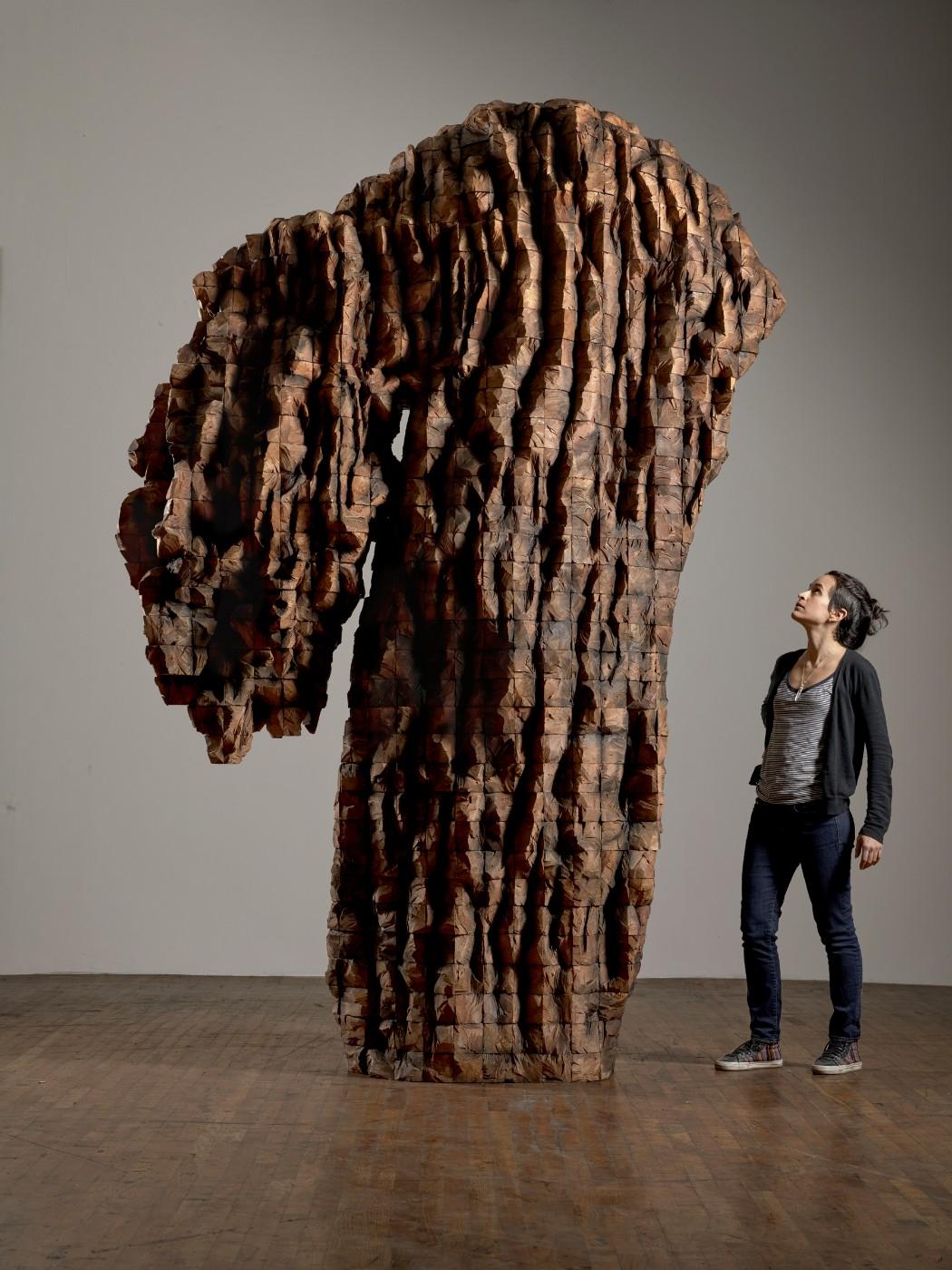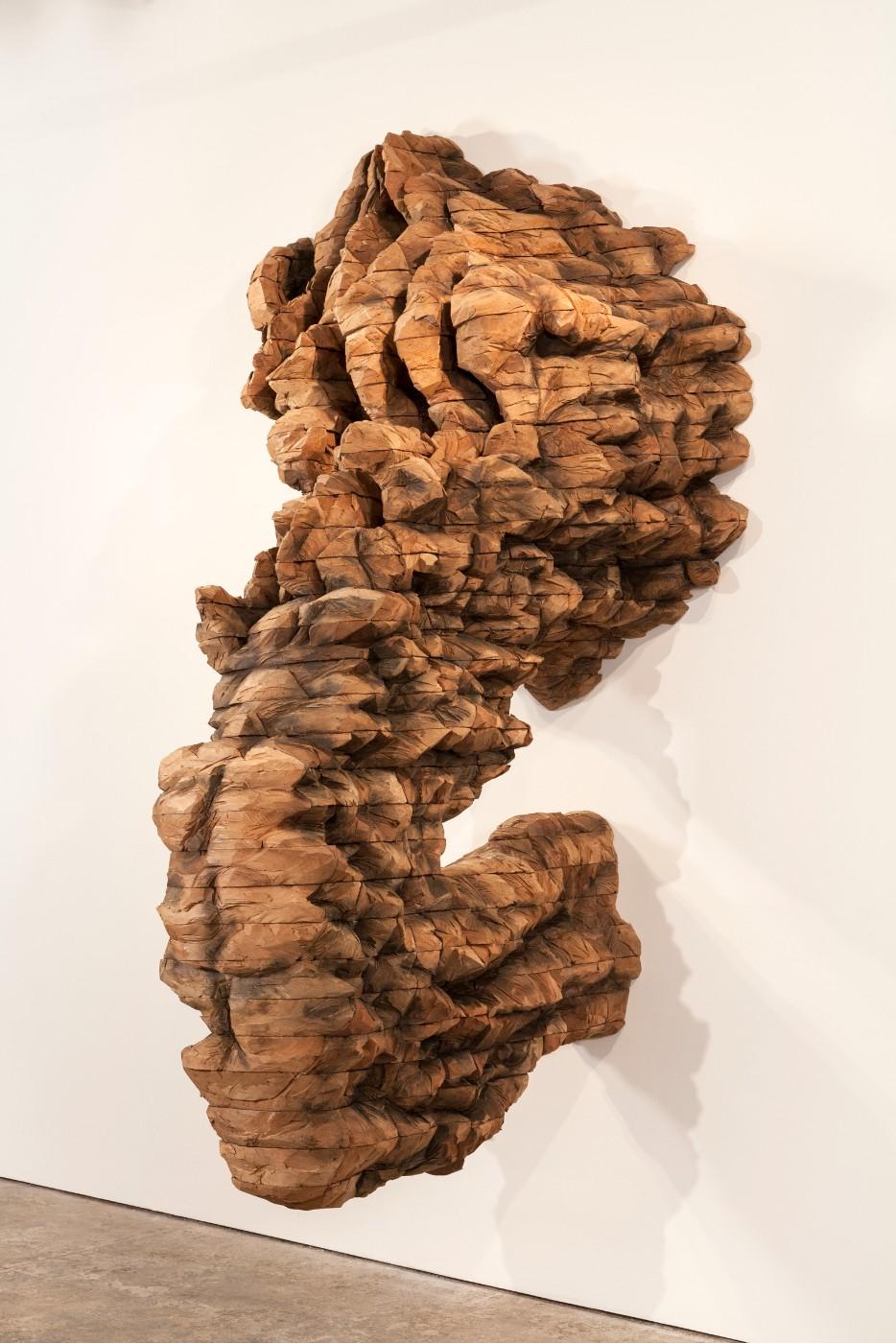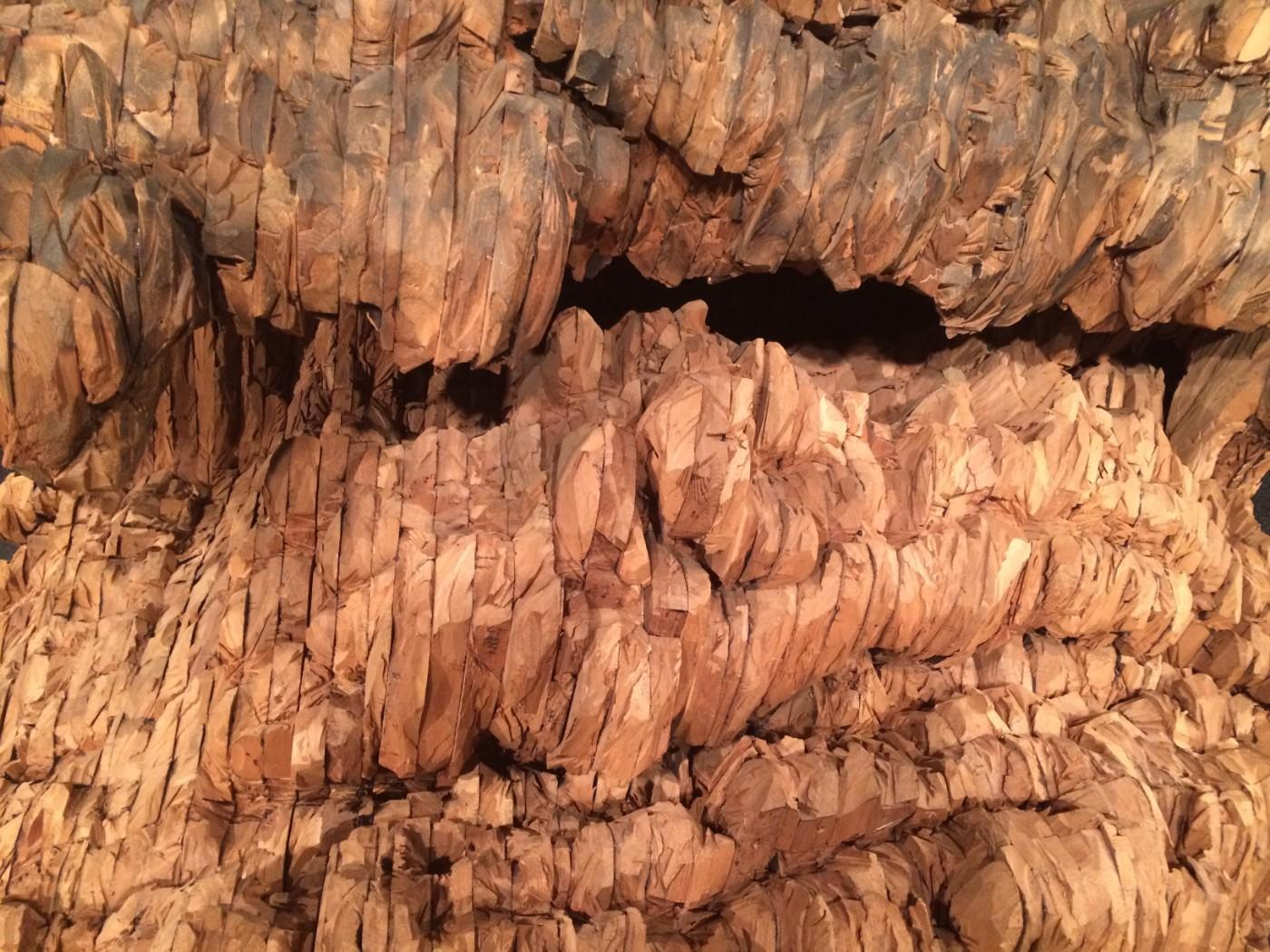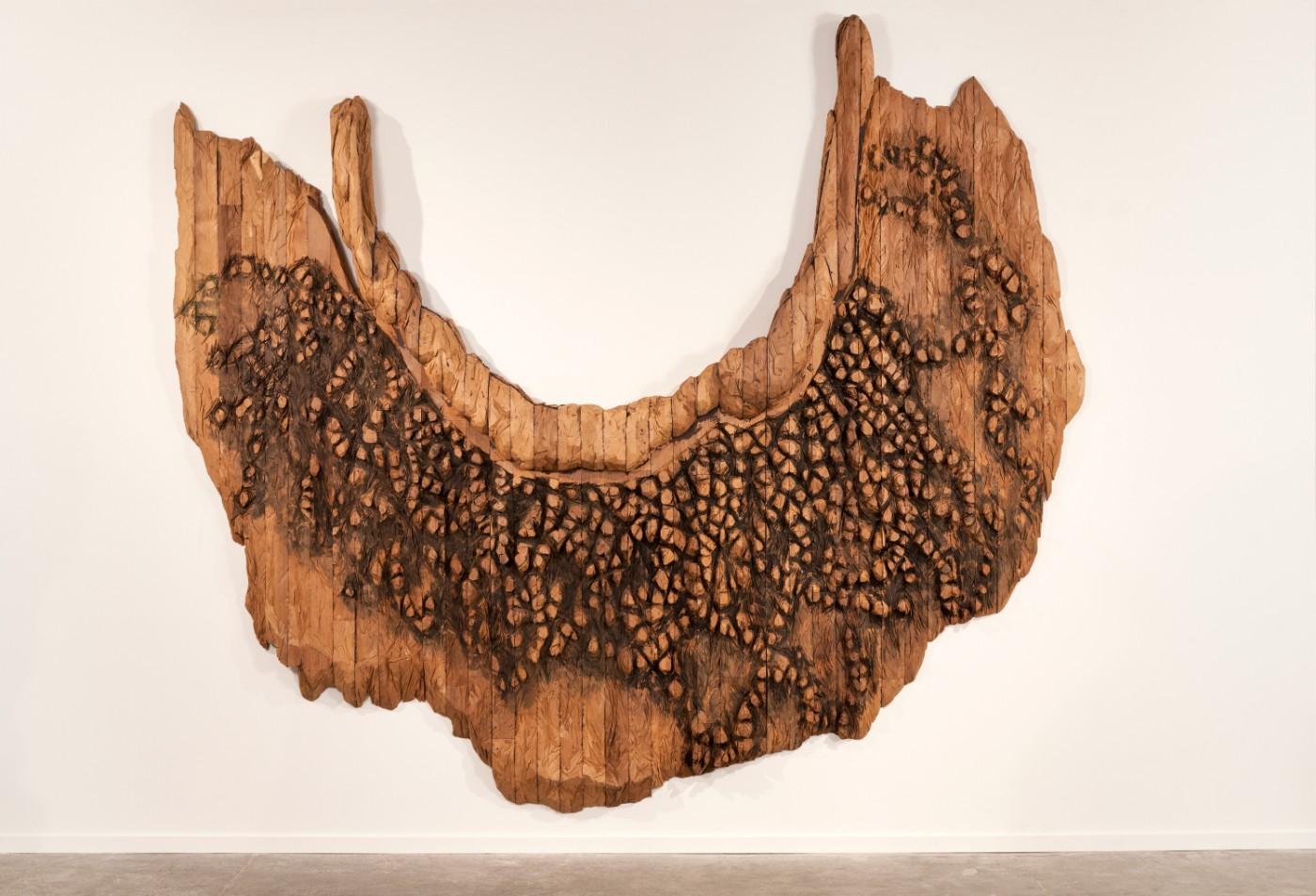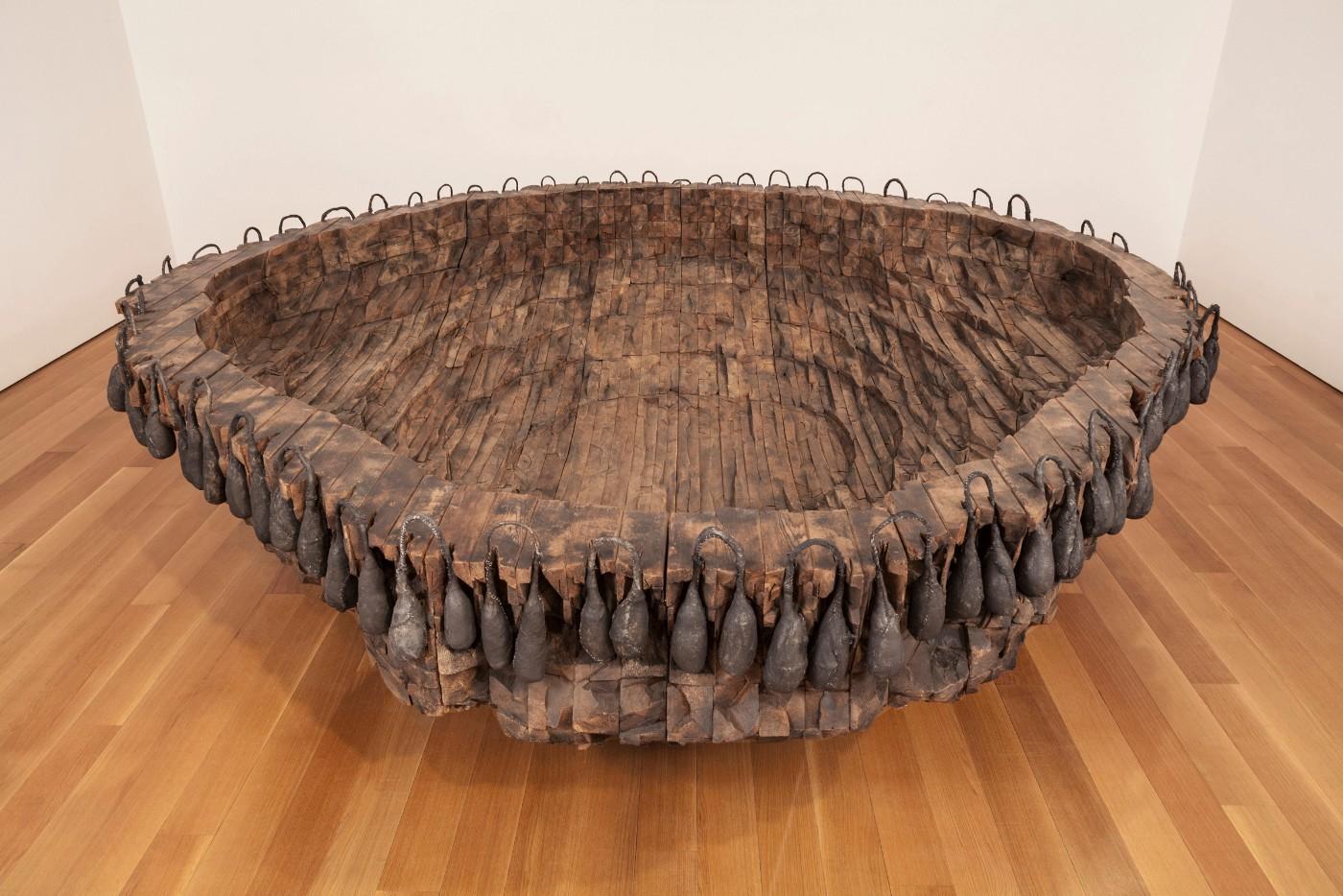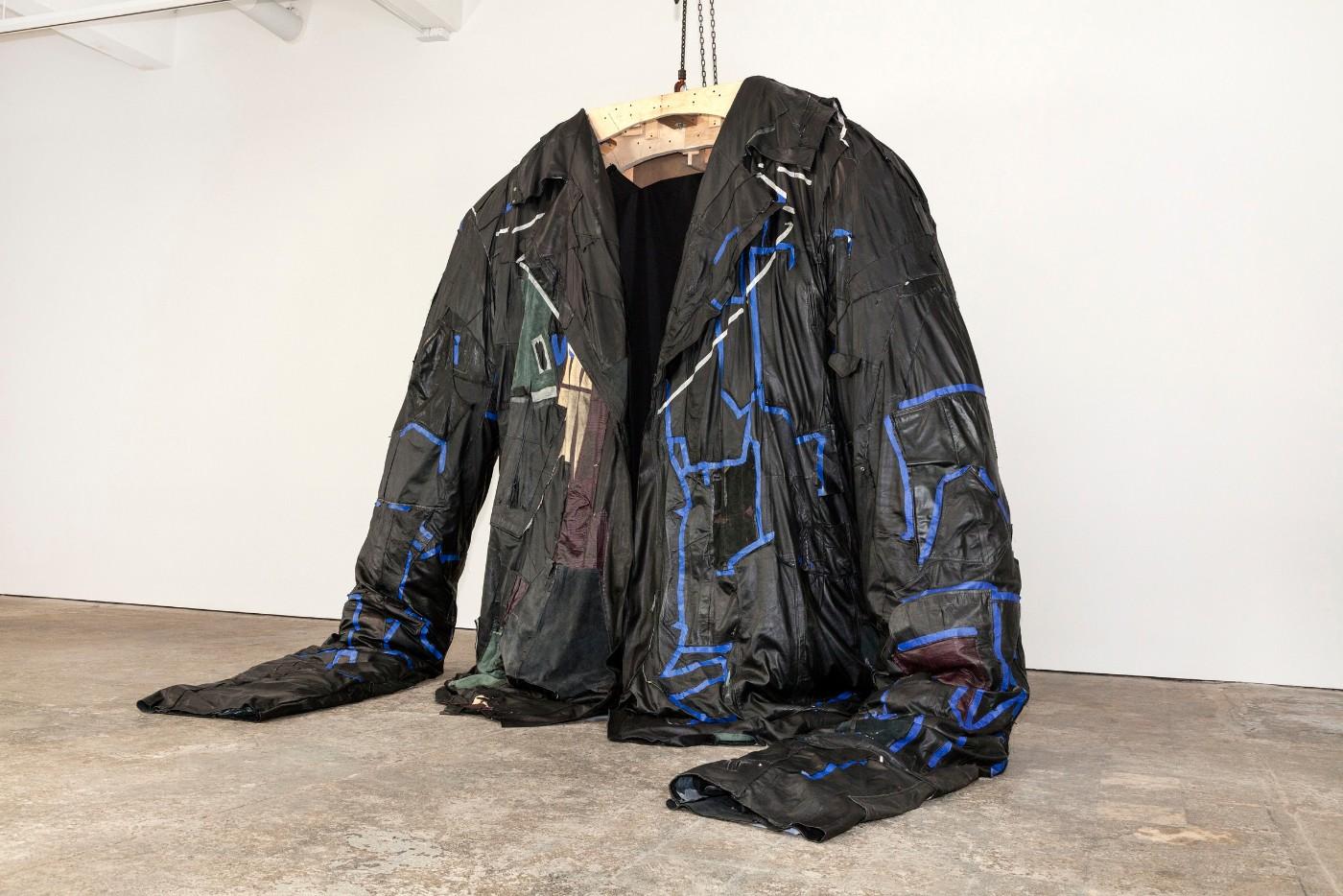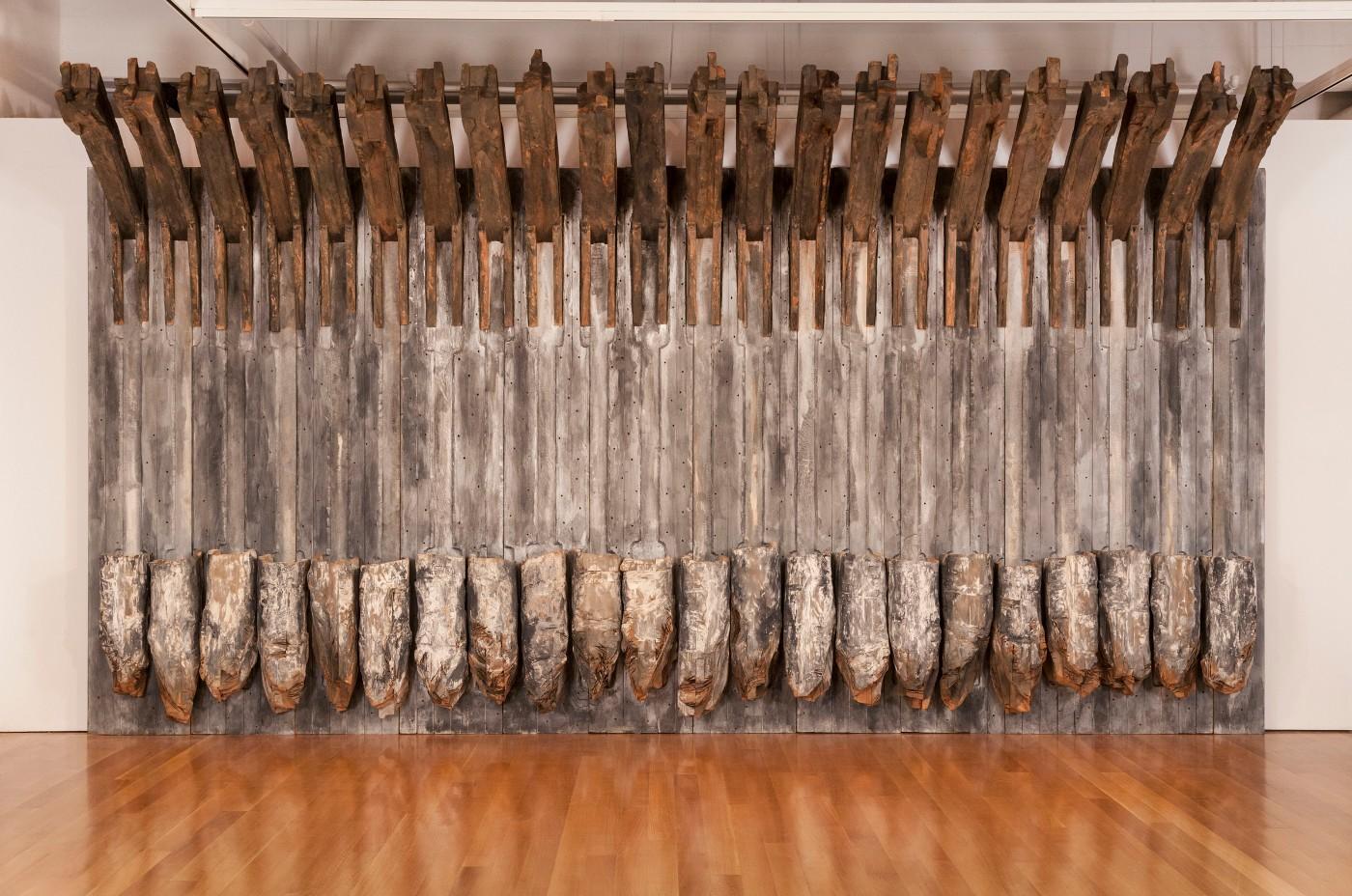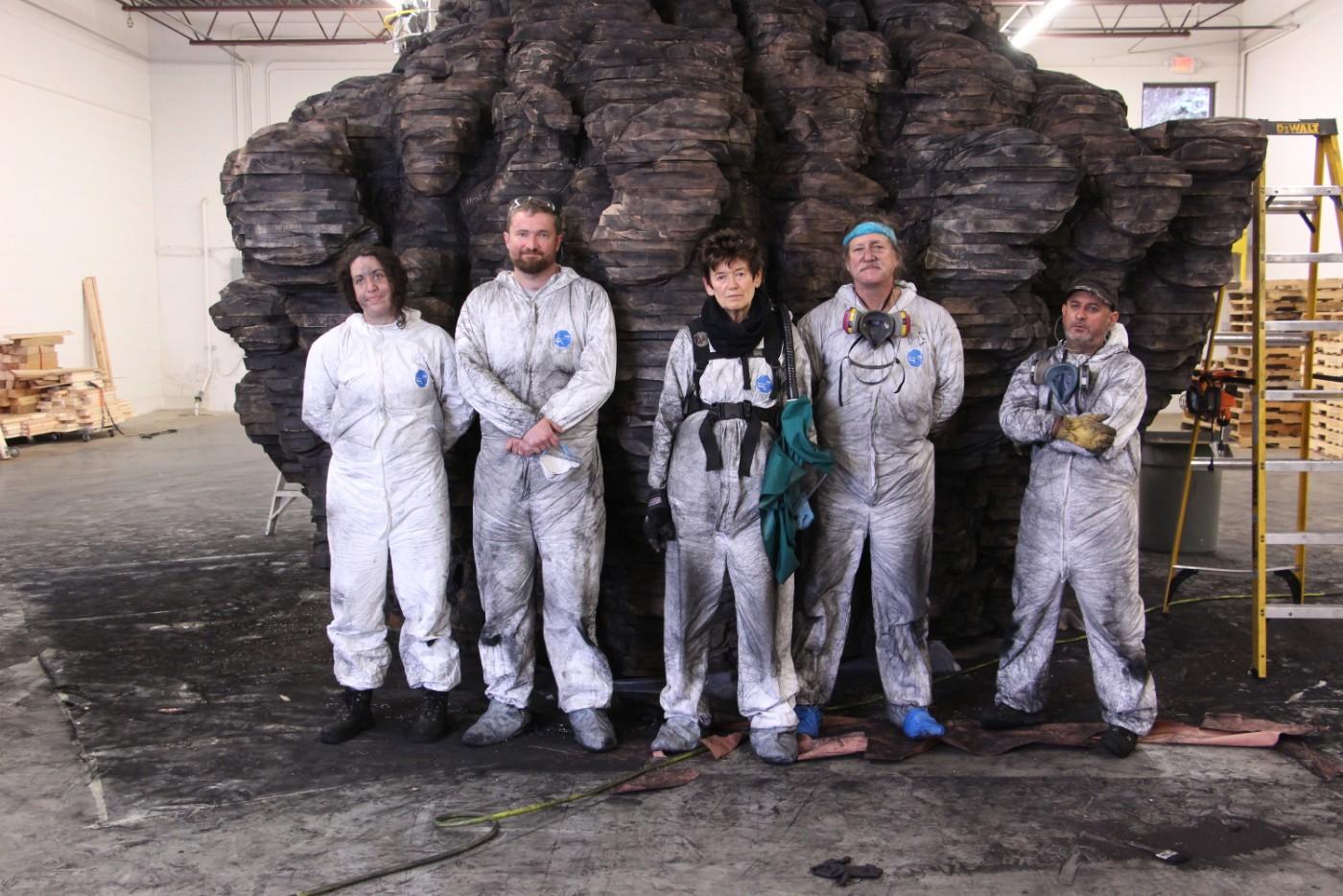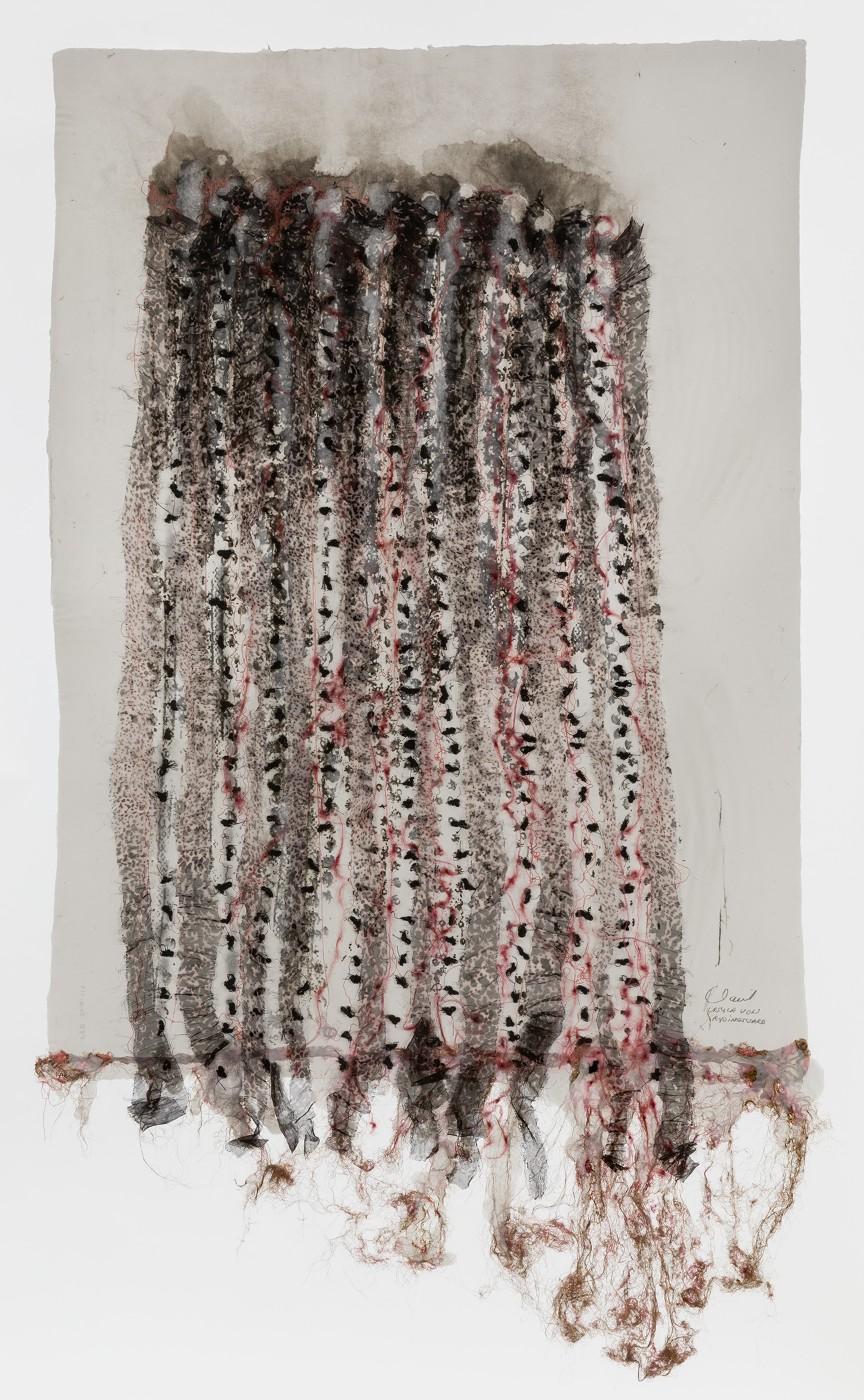Working primarily in cedar since 1975, von Ryvingsvard works almost entirely intuitively, never with drawings or mock-ups. The artist and her team of assistants lay out 4” x 4” cedar boards, mark them for cutting, carve them using circular saws, stack, reassemble and glue the planks together, and finally rub them with pigment or graphite to add further detail to the surface. The process can take a year or more for a single piece. The artist has recently created works in bronze and copper, for which a full-sized sculpture in cedar is made first, a process the artist insists on in order to retain the textural quality so important to her work.
The results of this laborious process are stunning. Every inch of every surface has been examined and manipulated, likely by several pairs of hands. The dramatic pieces seem to be made by scratching or clawing at the wood, and the twisting organic forms have a haunted, desperate feel. Her use of natural materials and the fact that the large structures are made from innumerable smaller parts reminds us that nature is always simultaneously growing and dying, being built up and broken down.




